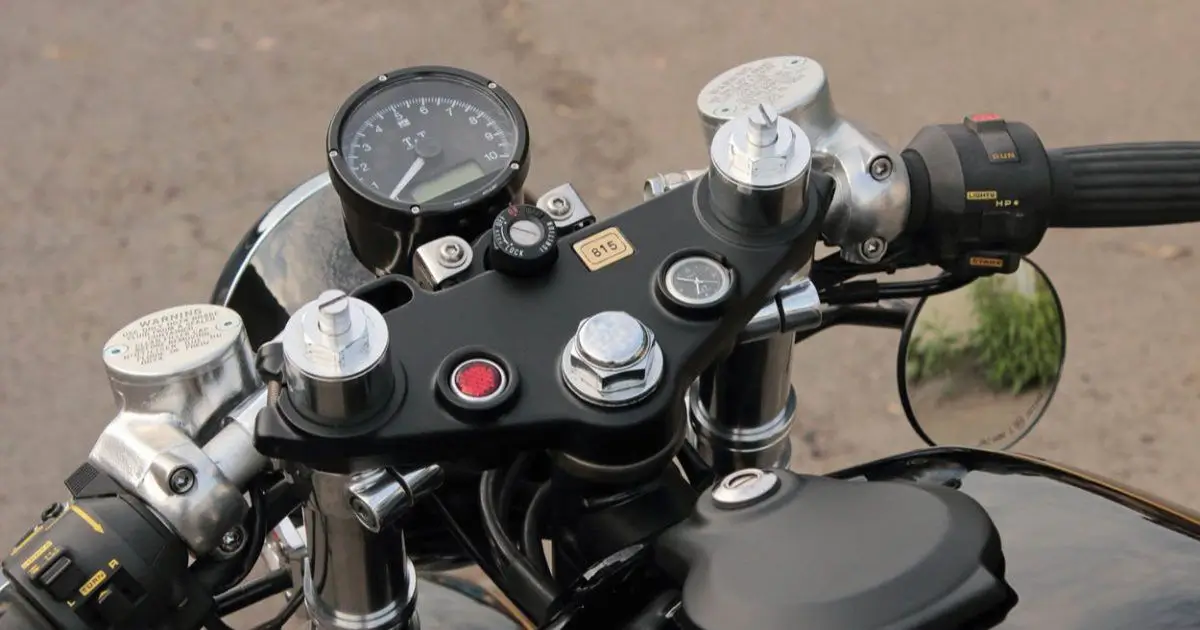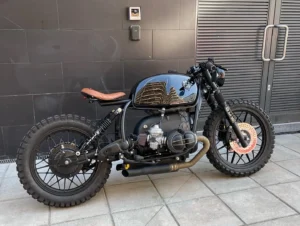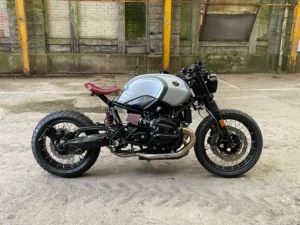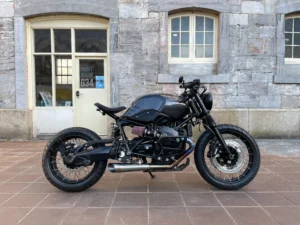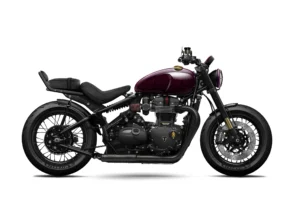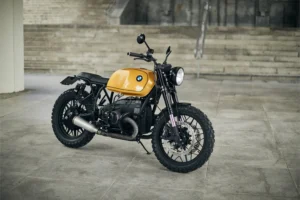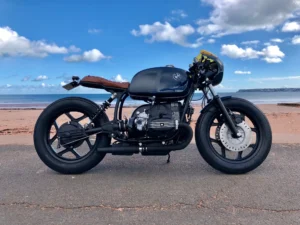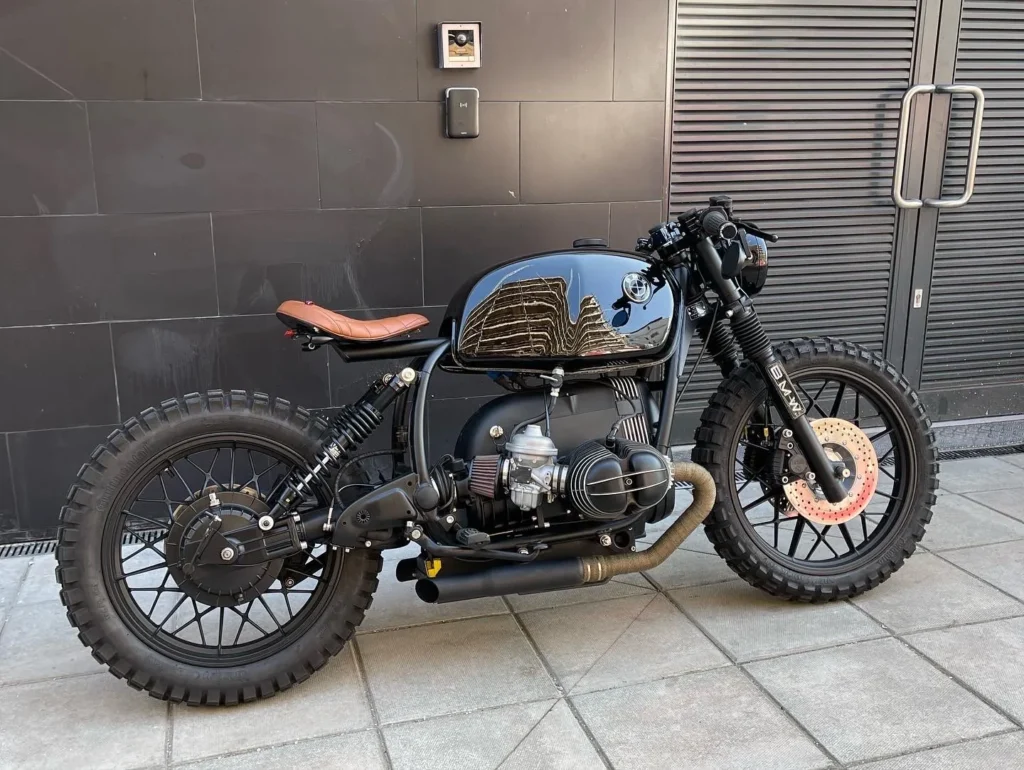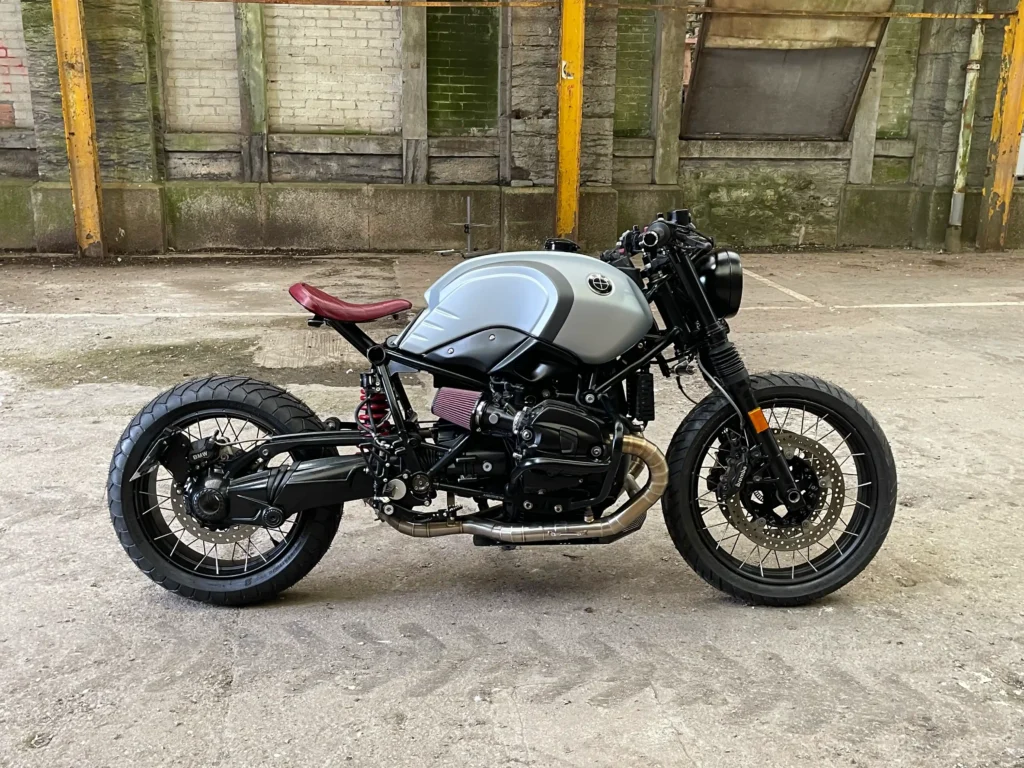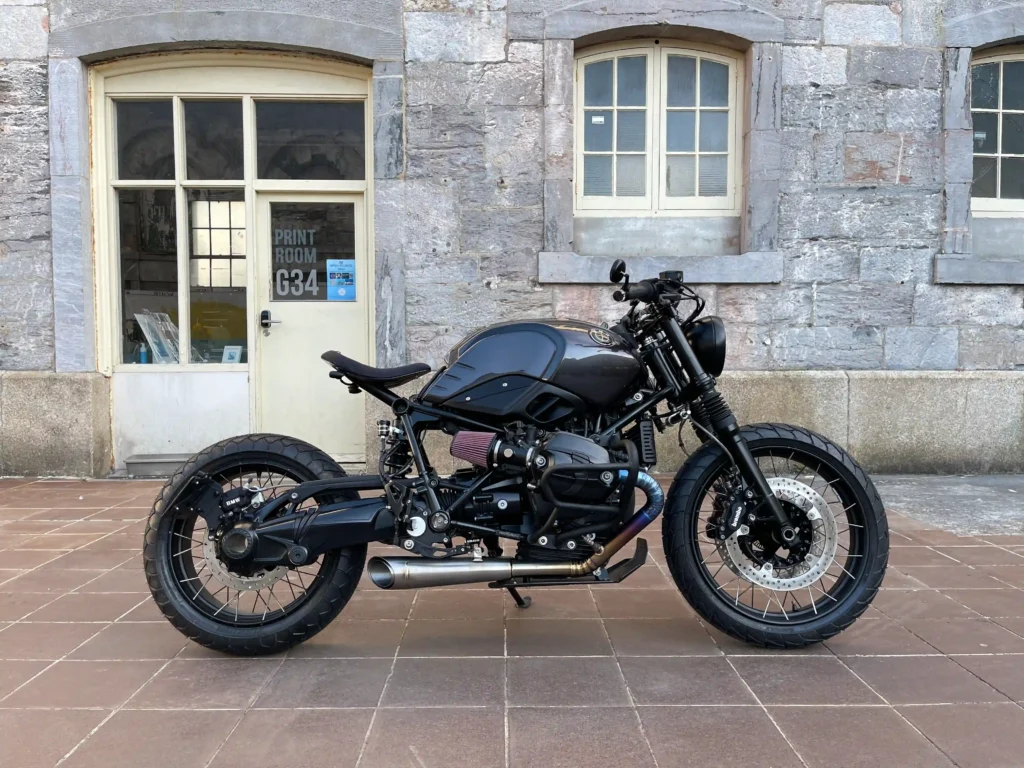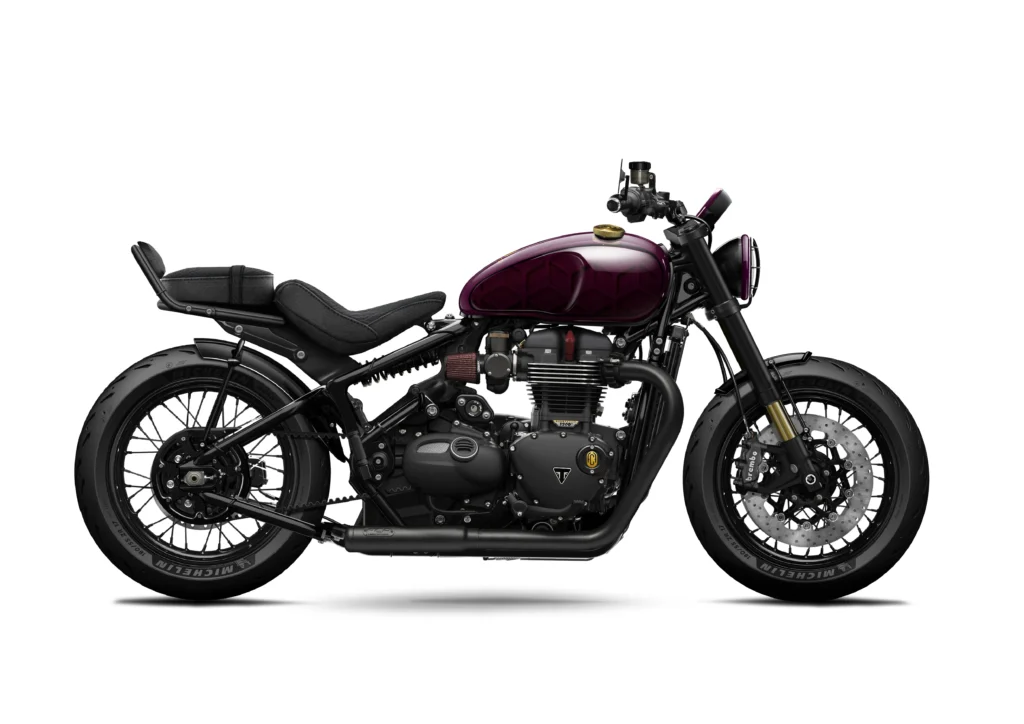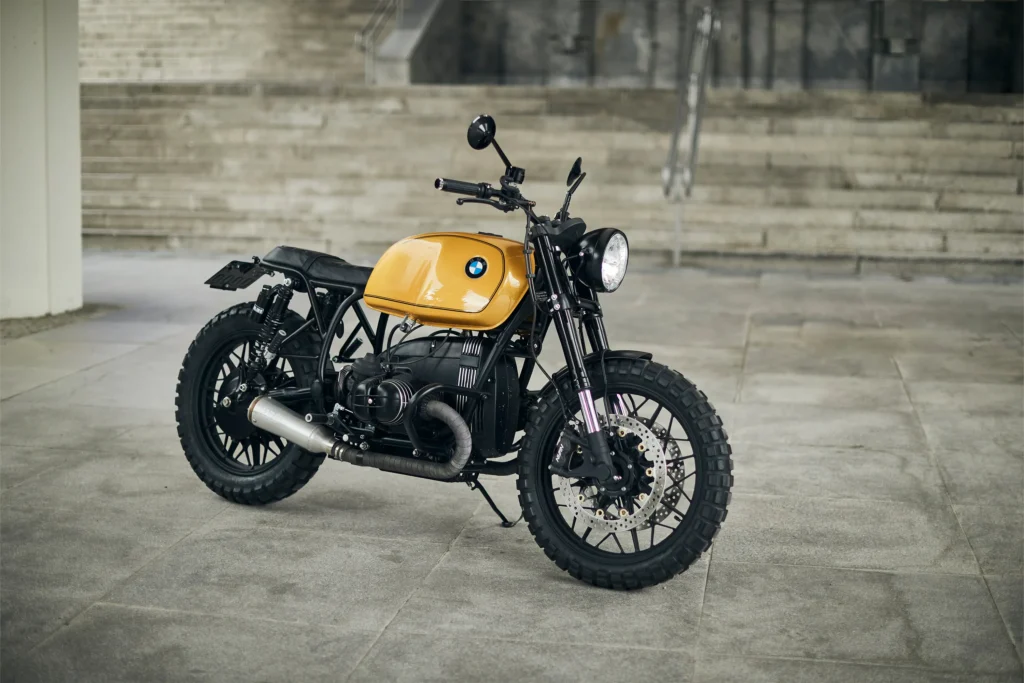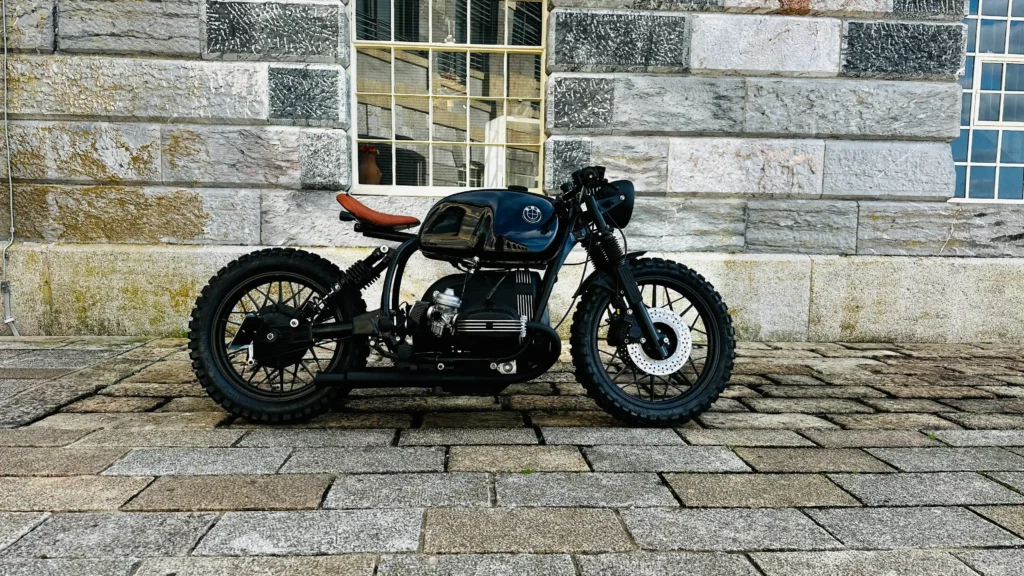Table of Contents
ToggleA cafe racer speedometer is both a precision instrument and a custom styling upgrade. It ensures accurate speed readings, supports legal compliance, and adds a finishing touch to your motorcycle’s design. The best options for 2025 include analog, digital, and hybrid cafe racer gauges from leading brands like Motogadget, KOSO, and Acewell.
In this guide, you’ll find detailed reviews, key features, and specifications, plus a step-by-step cafe racer speedometer installation guide and maintenance tips to keep your gauge performing accurately for years.
Top Cafe Racer Speedometers at a Glance
This section gives a quick overview of the most recommended cafe racer speedometers. Each model is chosen for its accuracy, durability, and design appeal. They fit a range of riding needs, from classic builds to modern retro projects.
| Model | Type | Key Features | Price Range |
| Motogadget Motoscope Chronoclassic 2 | Analog-Digital | Invisible LED display, multiple data readouts, waterproof, plug-and-ride ready | Premium |
| Motogadget Motoscope Pro | Digital | LED matrix, gear indicator, CAN-bus ready, ultra-slim design | Premium |
| KOSO DB-01R+ | Digital | Large LCD, 3-color backlight, multiple sensors, lightweight | Mid |
| KOSO TNT-01 | Digital | Stepper motor tachometer, fuel meter, clock, voltage monitor | Mid |
| Acewell 2853 | Hybrid | Waterproof, shock resistant, supports factory indicators | Mid |
| Daytona Velona 140mph | Analog | Stainless steel, compact design, odometer, trip meters | Mid |
| Trail Tech Vapor Digital | Digital | RPM graph, temperature sensors, trip functions | Mid |
These quick picks help you compare features before exploring the detailed reviews in the next section. Each one offers a strong mix of style, performance, and installation simplicity.
Types of Speedometers for Cafe Racers
Cafe racer speedometers come in three main designs, each with its own advantages. Your choice depends on the style of your cafe racer and the features you want. Here are the main types with examples from our recommended list.
Analog Speedometer
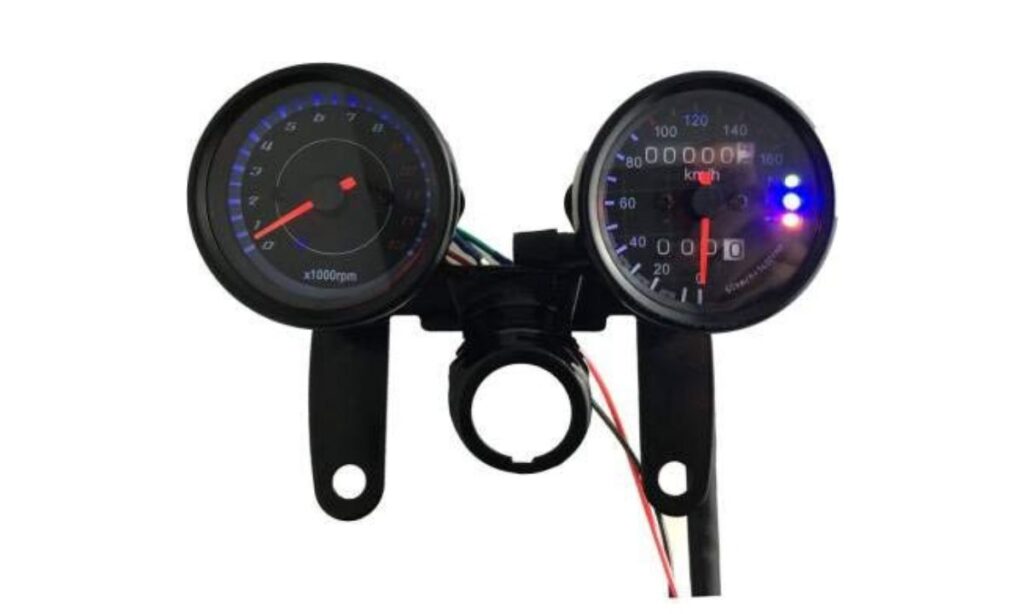
Analog speedometers use a moving needle over a numbered dial. They provide a traditional look that suits vintage-inspired motorcycles. Riders who want to preserve the period-correct style of their cafe racer often choose this type. On our list, the Daytona Velona 140mph is a good example. It has a compact stainless steel body, clear white LED lighting, and a stepper motor for accurate readings. Analog units usually focus on core functions, making them reliable and easy to operate.
Digital Speedometer
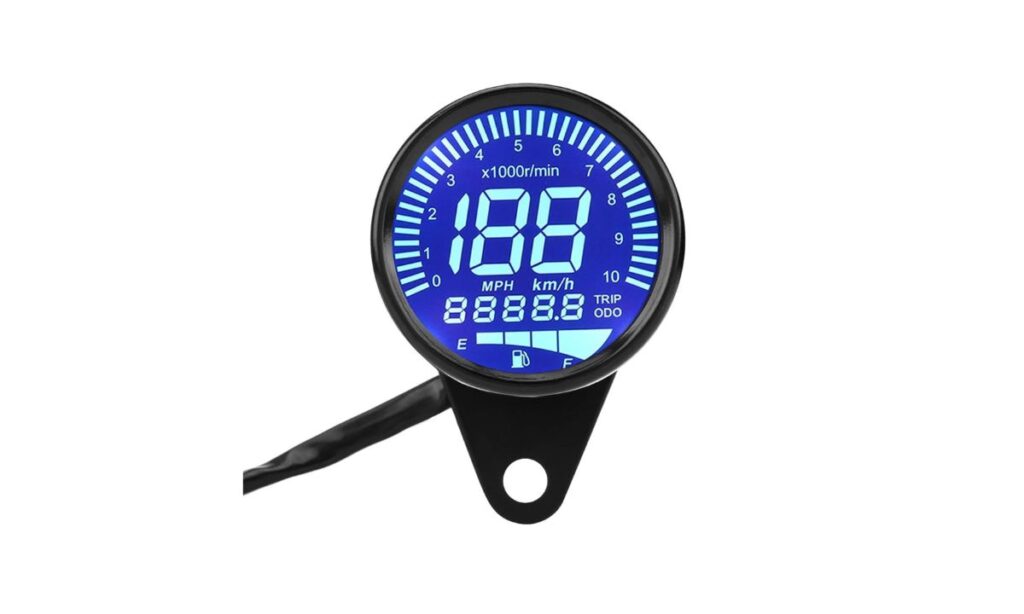
Digital speedometers display speed and other data on an electronic screen. They offer more functions, such as multiple trip meters, voltage monitoring, and backlighting for low-light visibility. Riders who value detailed performance data prefer this type. The Motogadget Motoscope Pro, KOSO DB-01R+, and KOSO TNT-01 on our list show the range of digital options available. These models include gear indicators, customizable displays, and in some cases, integration with vehicle electronics.
Analog-Digital Hybrid Speedometer
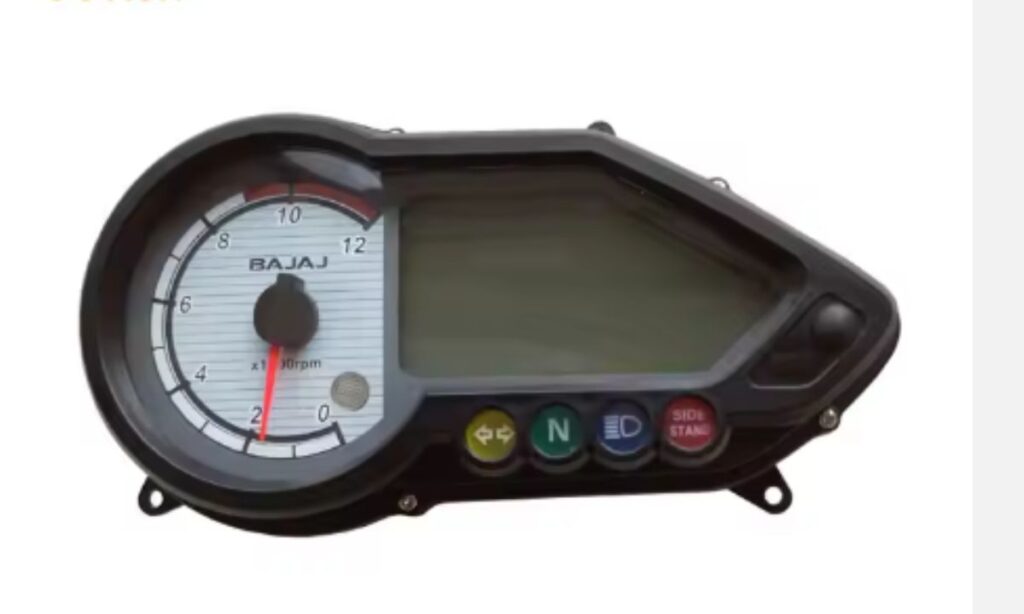
Hybrid speedometers combine the mechanical look of a needle with a small digital display for extra data. They are a balance between traditional style and modern convenience. The Motogadget Motoscope Chronoclassic 2 and Acewell 2853 from our list are strong examples. They provide speed, RPM, and other readings while keeping a classic gauge design. This type works well for riders who want both visual appeal and advanced information in one unit.
Detailed Reviews of the Best Cafe Racer Speedometers
The speedometers in this list are selected for accuracy, durability, and style. Each review explains the main features, build quality, and who it suits best. This will help you compare options quickly and choose the right one for your cafe racer.
1. Motogadget Motoscope Chronoclassic 2 Black

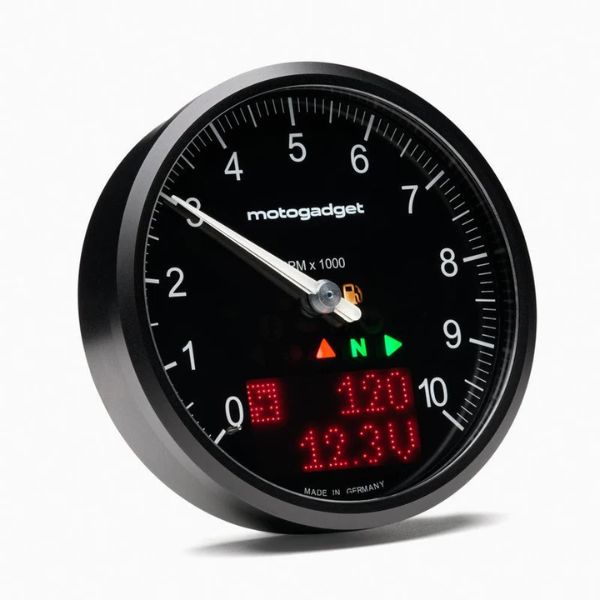
If you want a premium gauge with a classic face and advanced internal technology, this is one of the best options. It has an 80 mm dial with an invisible LED display that only lights up when in use. The display shows speed, RPM, gear position, and multiple trip readings. You can also view temperature, voltage, and fuel level. The unit is waterproof, uses a durable casing, and works with modern vehicle BUS systems. It includes indicator lights that stay hidden until needed, keeping the front view clean. Installation is simple with the plug-and-ride setup for compatible bikes, and the supplied sensor ensures accurate speed readings.
2. Motogadget Motoscope Pro

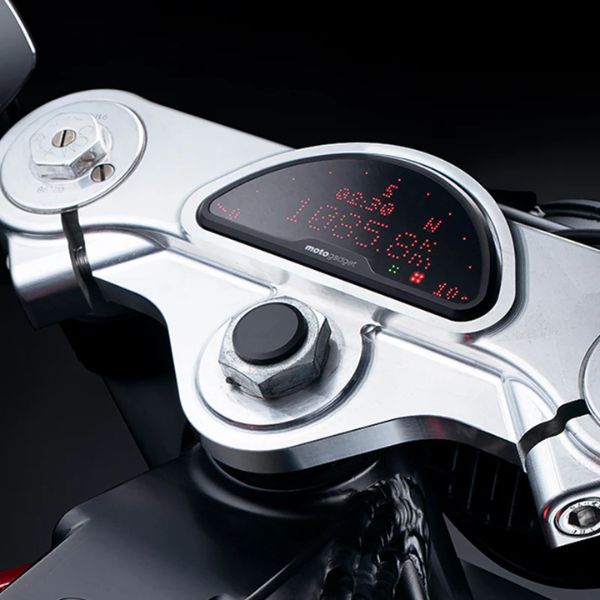
This is a slim, fully digital gauge with a bright LED matrix display. It shows speed, RPM, gear position, and trip data with high visibility in both sunlight and low light. You can configure the display to show the information you want most. It works with CAN-bus systems and supports extra sensors through breakout boxes. The unit has a strong CNC-machined aluminium body and comes with a waterproof speed sensor. It is designed for precision and is ideal for riders who want a modern display without adding bulk.
3. KOSO DB-01R+

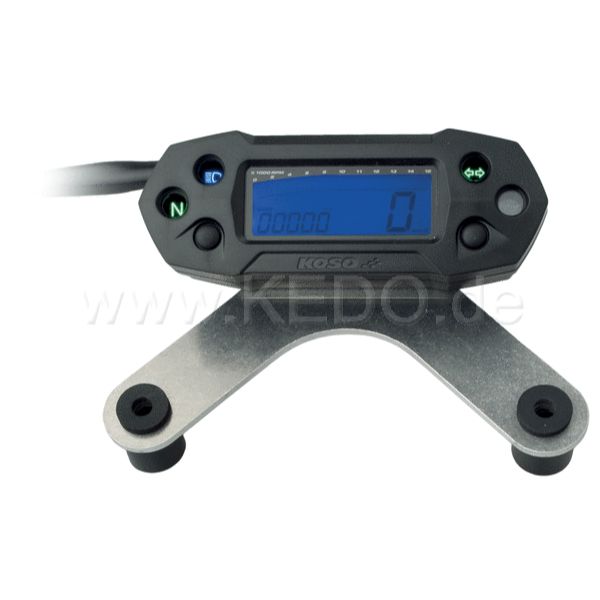
The DB-01R+ is a compact and lightweight digital gauge designed for clear visibility in all light conditions. It has a large LCD with a selectable backlight color. You can monitor speed, RPM, fuel level, voltage, and temperature. It also offers trip A/B meters and an odometer. The unit comes with a passive speed sensor and is compatible with a wide range of motorcycles. This model works well if you want a modern multifunction gauge that still keeps the front of the bike minimal.
4. KOSO TNT-01
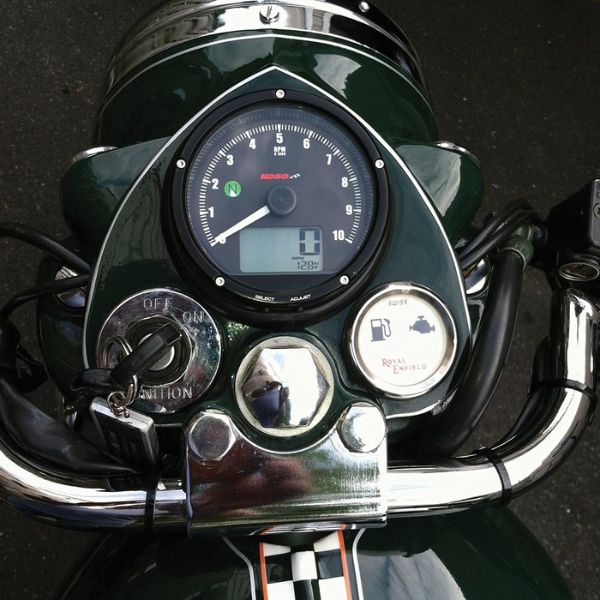
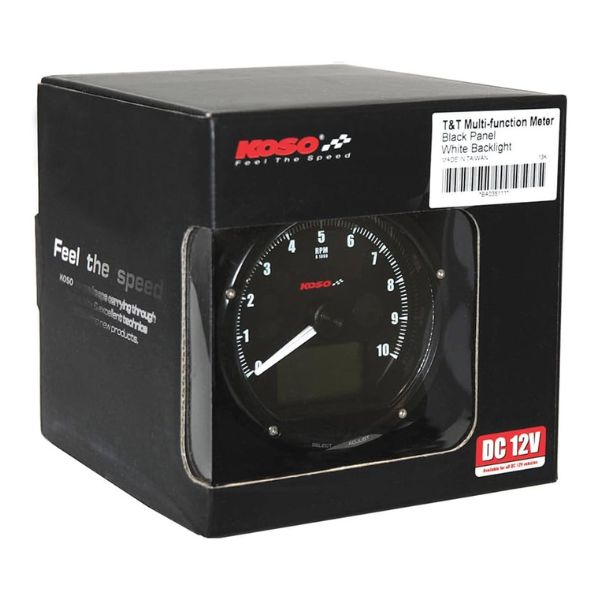
This model combines a digital display with a stepper motor tachometer for smooth needle movement. It shows speed, RPM, fuel level, and voltage, and includes a clock and shift light. You can adjust the backlight brightness and set RPM warnings. The unit is supplied with an active speed sensor and mounting hardware. It is a good fit for riders who want both a traditional moving needle for RPM and modern digital features for other data.
5. Acewell 2853


The Acewell 2853 is a hybrid gauge with a mechanical needle for RPM and a digital display for speed and other data. It is waterproof, shock resistant, and supports factory indicators such as turn signals, neutral, and oil. The unit can store trip and total distance readings, and it has a built-in clock. Its design works well for custom cafe racer builds that need a balance between style and multiple functions.
6. Daytona Velona 140mph
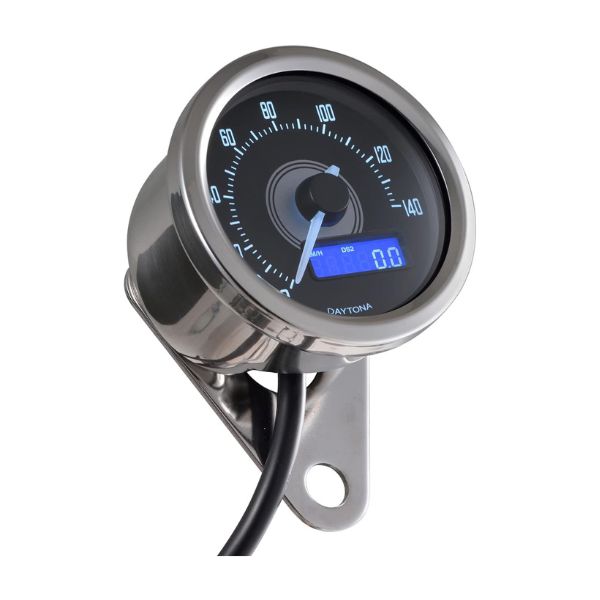
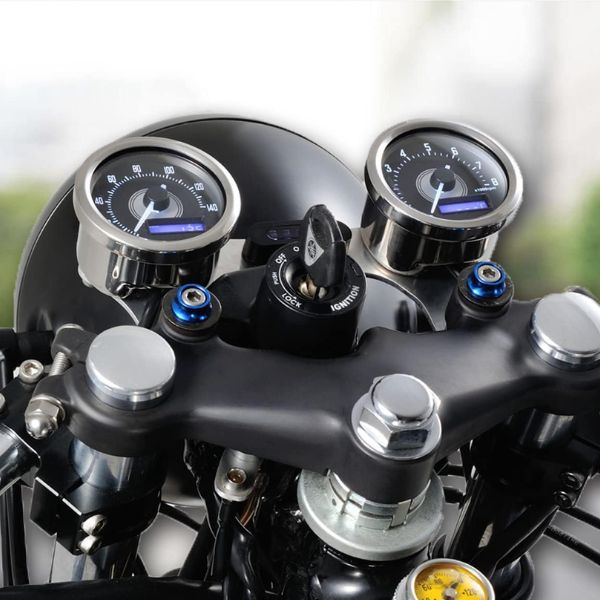
This is a compact analog gauge made from stainless steel with a polished chrome finish. It reads up to 140 mph with a stepper motor for accurate pointer movement. It also has an odometer, two trip meters, a clock, and a voltmeter. The LED backlight ensures visibility at night. It is water resistant and includes mounting hardware, making it easy to install on different motorcycles. This model is ideal if you want a simple, reliable, and stylish speedometer.
7. Trail Tech Vapor Digital
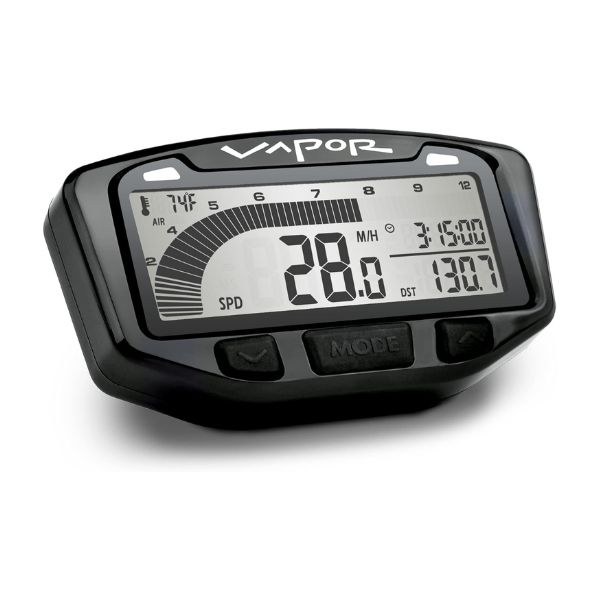
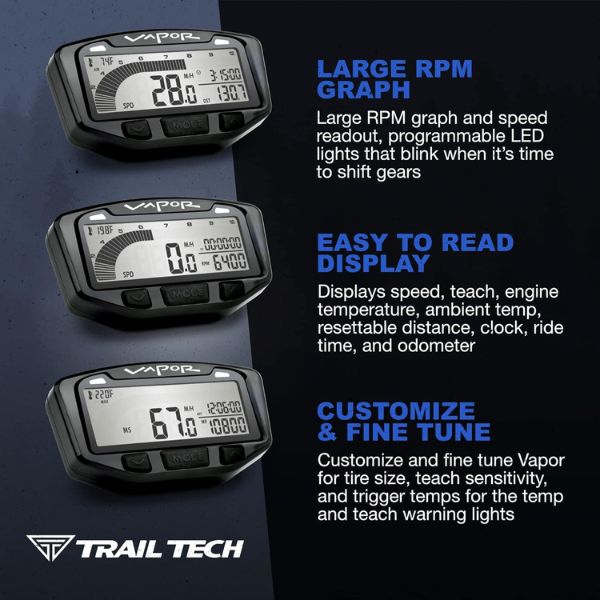
The Vapor Digital is built for riders who want complete performance data in one display. It shows speed, RPM, engine temperature, ambient temperature, trip distance, and ride time. It has programmable shift and temperature warning lights. The unit records maximum speed, RPM, and temperature, which can help you monitor performance over time. It comes with a water temperature sensor, wheel sensor, and mounting hardware. This is a versatile choice for both street and off-road riding.
How to Choose the Perfect Cafe Racer Speedometer?
The right speedometer matches your bike’s setup, style, and riding needs. It should fit your mounting space, connect easily to your wiring, and deliver the functions you use most. Picking a well-matched unit saves time during installation and ensures you get accurate readings on every ride. Here’s what to check before you buy.
Bike Compatibility
Before you choose a speedometer, check if it works with your cafe racer’s setup. Look at the mounting space, wiring type, and sensor connection. The Motogadget Motoscope Chronoclassic 2 is available in plug-and-ride versions for certain bikes, making installation easier. Models like the Trail Tech Vapor Digital include universal sensors, which suit custom builds. Picking a unit that matches your bike’s requirements will save time during installation and prevent extra costs.
Day and Night Readability
A good speedometer must be easy to read in bright sunlight and at night. The Motogadget Motoscope Pro uses an LED matrix that stays clear in all conditions, while the Daytona Velona has a bright backlight for low-light riding. If you ride often at night, choose a model with adjustable brightness, such as the KOSO TNT-01 or KOSO DB-01R+.
Waterproofing and Vibration Resistance
Different weather conditions mean your speedometer needs protection. Units like the Acewell 2853 are fully waterproof and resistant to heavy vibration, which is useful for older cafe racers with more engine movement. The Daytona Velona also has a sealed stainless steel case to protect the internal parts from moisture.
GPS, Tachometer, and Extra Functions
Decide if you need extra features like GPS speed reading, multiple trip meters, or a tachometer. The Trail Tech Vapor Digital gives detailed ride data and temperature monitoring, while the KOSO DB-01R+ includes a fuel gauge and voltage display. These functions can be helpful for long-distance rides or performance tuning.
Balancing Budget and Build Quality
A speedometer is an investment in both style and function. Higher-end models like the Motogadget Motoscope Pro cost more but offer top build quality and advanced features. Mid-range options such as the KOSO TNT-01 or Acewell 2853 provide a mix of value and performance. Choose based on how much you ride, your budget, and the style you want for your cafe racer.
How Do You Install a Speedometer on a Cafe Racer?
Cafe racer speedometer installation starts with the right tools and a clear plan.The process includes removing the old unit, fitting the new one securely, wiring it correctly, and calibrating it for accuracy. Done right, it gives you precise readings and a clean, professional look.
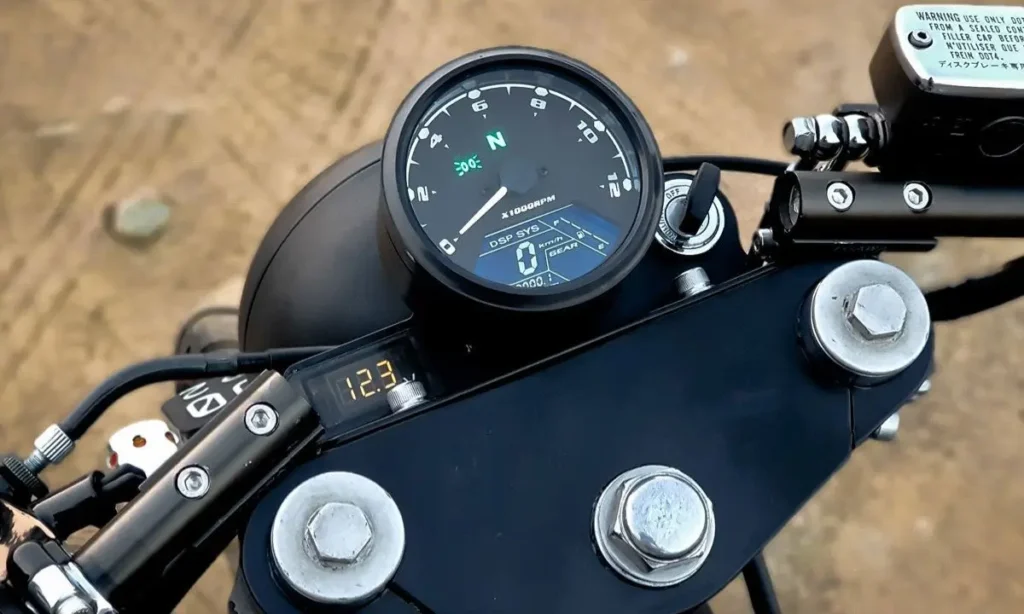
Tools You Will Need
Before starting, prepare the basic tools. A set of screwdrivers, an adjustable wrench, wire cutters, crimping pliers, and electrical tape are essential. If your speedometer uses a separate sensor, keep it within reach along with the mounting hardware. Having everything ready will make the process faster and avoid interruptions.
Removing the Old Unit and Identifying Wiring
Begin by disconnecting the battery to prevent short circuits. Remove the current speedometer carefully, loosening the mounting bolts without damaging the bracket. Note the wiring connections before unplugging them. For example, the Daytona Velona and Acewell 2853 use separate wires for power, ground, and signal, which must match correctly with the new unit.
Mounting and Securing the New Speedometer
Position the new speedometer on your chosen mounting point. Make sure it sits firmly without movement when the bike vibrates. Models like the Motogadget Motoscope Pro and KOSO TNT-01 include dedicated brackets to simplify this step. Tighten the hardware evenly to avoid strain on the housing.
Connecting the Wiring
Match each wire to its correct terminal. Power and ground are standard on all models, while signal wires connect to the wheel sensor or gearbox sensor. Some units, such as the Trail Tech Vapor Digital, come with their own sensor, which should be mounted according to the instructions. Use crimp connectors for secure contact and wrap exposed areas with electrical tape for insulation.
Calibrating for Accurate Readings
Once installed, calibration ensures correct speed and distance readings. Set the wheel circumference according to the manufacturer’s guide. Digital models like the KOSO DB-01R+ allow easy adjustment through the menu. For GPS-supported units, the system will adjust automatically after the first ride. Test the setup on a short route and confirm that the readings are stable and accurate before regular use.
How Do You Maintain a Cafe Racer Speedometer for Accurate Readings?
Regular maintenance keeps a cafe racer speedometer accurate and reliable. The process involves checking wiring connections, keeping the display clean, ensuring the sensor is aligned, recalibrating after tire changes, and replacing worn components. Consistent care not only preserves performance but also extends the life of the unit.
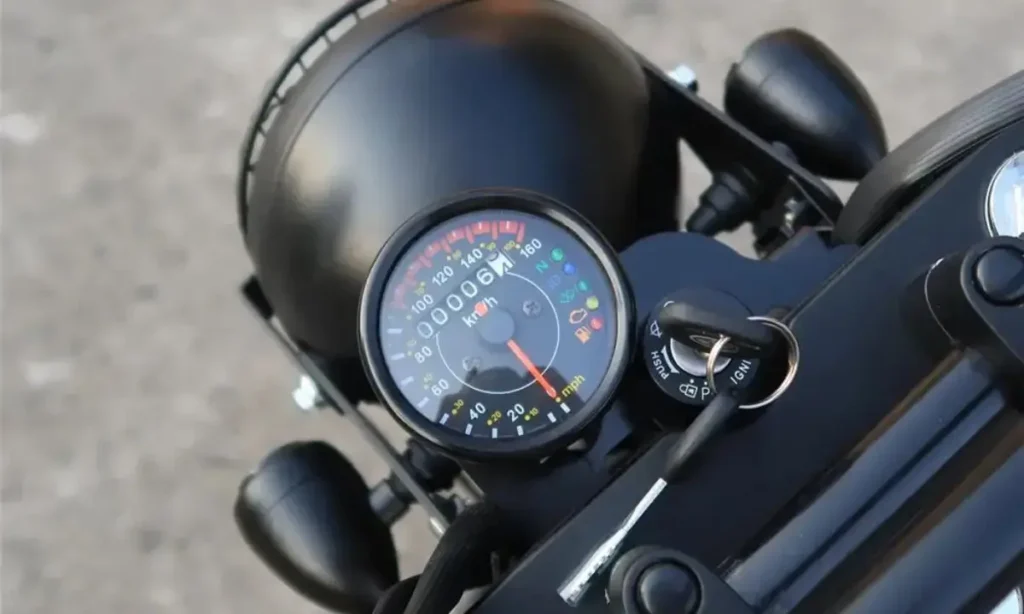
Wiring Checks
A speedometer depends on stable electrical connections to give accurate readings. Over time, vibration can loosen connectors or damage insulation. Every few weeks, inspect the wiring from the unit to the sensor and battery. On models like the Motogadget Motoscope Chronoclassic 2 or KOSO TNT-01, check that the plug fittings remain tight and free from corrosion. Repair or replace any worn cables before they cause reading errors.
Display Cleaning
A clear display ensures you can read your speed at a glance. Use a soft, damp cloth to wipe dust and fingerprints from the screen or lens. Avoid strong cleaners that can scratch or dull the surface. Units like the Daytona Velona with polished chrome housings benefit from gentle polishing to maintain appearance without affecting water seals.
Sensor Alignment
Incorrect sensor placement can cause inaccurate speed readings. For models with external sensors, such as the Trail Tech Vapor Digital, check that the magnet and pickup are aligned and free of debris. Keep the gap within the manufacturer’s recommended range for consistent performance.
Recalibration
Tire changes or adjustments to wheel size settings can affect speed accuracy. If you replace tires, recalibrate the unit according to the manufacturer’s instructions. Digital models like the KOSO DB-01R+ allow quick wheel circumference adjustments in their menu, while GPS-supported models will adapt automatically.
Component Replacement
Parts such as mounts, gaskets, or sensor cables can wear out after long use. When you notice cracks, looseness, or loss of function, replace these parts with genuine or compatible components. This keeps the speedometer working reliably and protects it from further damage.
Final Recommendations
We recommend the Motogadget Motoscope Chronoclassic 2 as the best choice for a cafe racer speedometer. It combines precise performance with a design that looks at home on any classic build. The dial stays clean when switched off, while the hidden LED display shows clear, detailed information when riding. Its sealed construction protects against weather, and the plug-and-ride compatibility makes installation straightforward on supported bikes.
For riders who prefer a fully modern look with advanced features, the Motogadget Motoscope Pro is a strong alternative. The slim LED matrix shows speed, RPM, gear position, and trip data with exceptional clarity in both sunlight and low light. It is a good match for anyone who wants maximum information without a bulky unit.
If you are working with a smaller budget, the Acewell 2853 is a dependable option. It offers both analog and digital readouts, is fully waterproof, and fits easily into custom dashboards. It covers the essential functions you need and keeps the display simple.
For the best blend of style, accuracy, and durability, our recommendation remains the Motogadget Motoscope Chronoclassic 2. It delivers long-term reliability and enhances the look of your cafe racer.
FAQs
Will my bike’s stock speedometer cable work with a new cafe racer speedometer?
Not always. Some bikes use a standard cable ratio, but others need a different speedo drive or custom cable. Check the wheel-to-gauge ratio before buying to avoid fit issues.
Can I use LED indicator bulbs with my new speedometer?
Yes, but it may need extra parts. LEDs have polarity, so they work only when current flows the right way. You might need diodes or a relay for proper operation.
Do GPS speedometers require a wheel sensor?
No. GPS speedometers use satellite data, so they do not need a wheel cable or sensor. This makes installation simpler and keeps the bike’s front end clean.
How accurate are cafe racer speedometers?
Most speedometers can be 5–10% off, especially after tire changes. To check accuracy, compare the reading with a GPS app while riding.
Are mini cafe racer speedometers just for style?
No. They save space, give accurate speed readings, and keep the bike road-legal. They are a good choice for custom builds and minimal designs.

